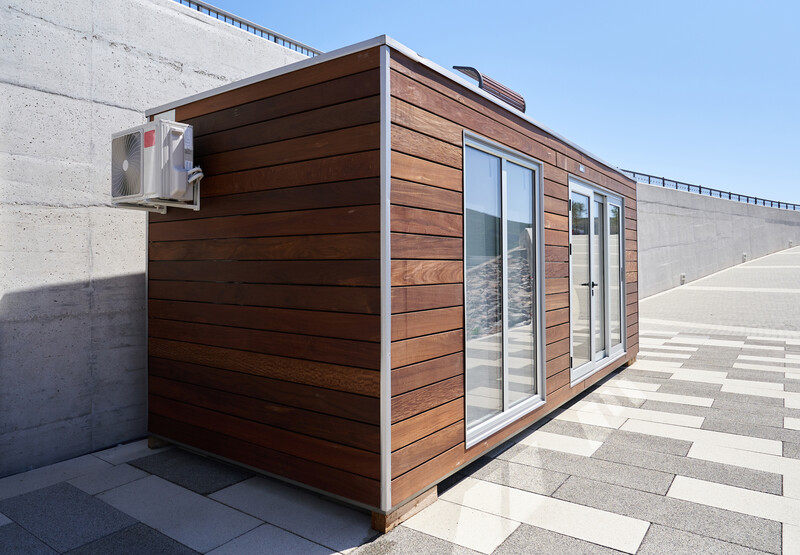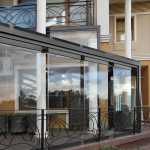Portable buildings have been growing in popularity in recent years. They are often seen as a more environmentally friendly option than traditional construction, but is that really the case? Let’s take a closer look at the pros and cons of portable buildings to see if they really are better for the environment.
What Are Portable Buildings?

They are structures that can be easily moved from one location to another. They are often used as temporary or emergency shelters, or as storage units. Some portable buildings are made of lightweight materials, while others are made of more durable materials that can withstand wind and weather.
A great option for people who need a temporary or emergency shelter, or for people who need extra storage space. They are also a good option for people who want to avoid the cost and hassle of building a permanent structure. Portable buildings can be used for a variety of purposes, including homes, offices, schools, churches, community centres, clinics, warehouses, and garages.
Portable Buildings Materials
Materials are ideal for use on construction sites, as well as in a variety of other settings. They can be quickly and easily assembled, without the need for any special tools or equipment. In addition, they are made from high-quality materials that can withstand even the harshest weather conditions. Some of the most common materials include metal, wood, and plastic. Metal buildings are typically the heaviest and most durable, while plastic buildings are the lightest and most portable. Wood buildings are a good middle ground, offering a combination of durability and portability.
Are Portable Buildings Environmentally Friendly?
Are portable buildings really better for the environment than traditional construction? Let’s take a closer look at the pros and cons to see if they are truly more environmentally friendly.
Pros
- Are often made of lightweight materials, which makes them easier to transport and set up. This reduces the amount of energy needed to transport and install them.
- Can be reused or recycled, which reduces the amount of waste produced during construction.
- Portable buildings are often designed to be modular, which allows them to be easily dismantled and moved to another location. This minimises the impact on the environment caused by traditional construction methods.
- Portable buildings are often energy-efficient, which reduces the amount of energy needed to heat or cool them.
- Can be used for a variety of purposes, which reduces the number of materials needed for construction. They can also be recycled, which reduces the amount of waste produced during construction.
Cons
- Can be less durable than traditional construction, which means they may need to be replaced more often.
- Can be more expensive than traditional construction: the cost of materials and transportation can be higher.
- It May not be suitable for all climates and environments: they may not be as energy-efficient in cold climates, for example.
So, are portable buildings more environmentally friendly than traditional construction? In general, portable buildings do have a smaller environmental impact than traditional construction. However, there are some drawbacks to consider, such as the fact that they may not be as durable as traditional construction. Overall, portable buildings are a good option for people who want an environmentally friendly alternative to traditional construction.
Increasing The Environmentally Friendliness Of Portable Buildings
Can I increase the environmental friendliness? Yes! There are a number of ways to increase the environmental friendliness of portable buildings. Here are a few tips:
- Choose lightweight materials whenever possible. This will reduce the amount of energy needed to transport and install the building.
- Choose recycled materials whenever possible. This will reduce the amount of waste produced during construction.
- Make sure the building is energy-efficient. This will reduce the amount of energy needed to heat or cool the building.
- Choose a modular design whenever possible. This will allow the building to be easily dismantled and moved to another location.
- Use natural light and ventilation whenever possible. This will reduce the amount of energy needed to light and heat the building.
- Recycle or compost any waste produced during construction. This will reduce the amount of waste sent to landfills.
By following these tips, you can make your portable building more environmentally friendly and reduce its impact on the environment.
Overall, portable buildings are a good option for people who want an environmentally friendly alternative to traditional construction. They are made of lightweight materials, which makes them easier to transport and set up. They can also be recycled or reused, which reduces the amount of waste produced during construction. They s are also often energy-efficient, which reduces the amount of energy needed to heat or cool them. There are a few drawbacks to consider, such as the fact that they may not be as durable as traditional construction. However, by following the tips listed, you can make your portable building more environmentally friendly and reduce its impact on the environment.







Add Comment